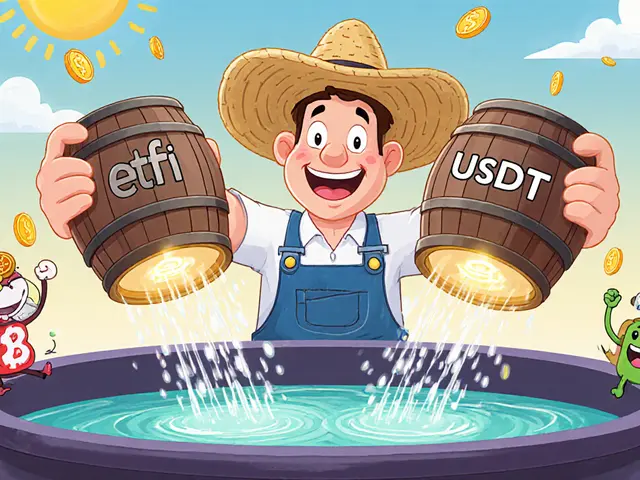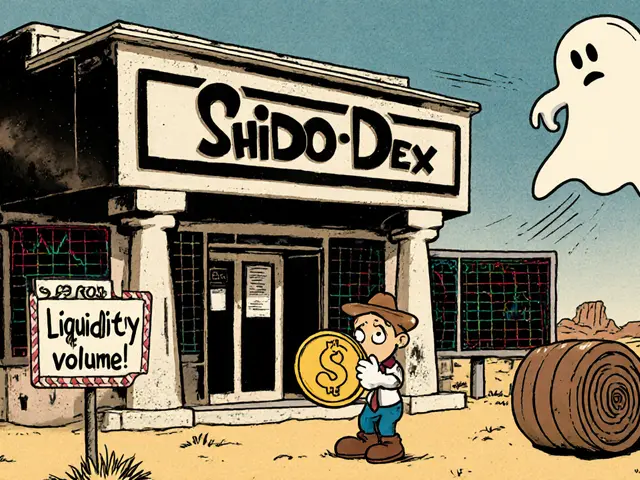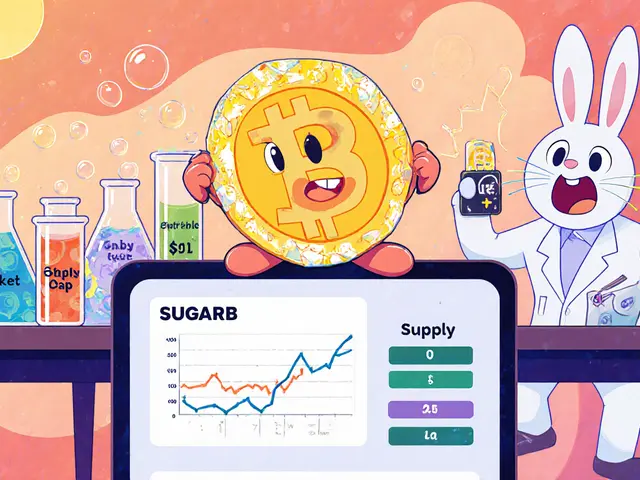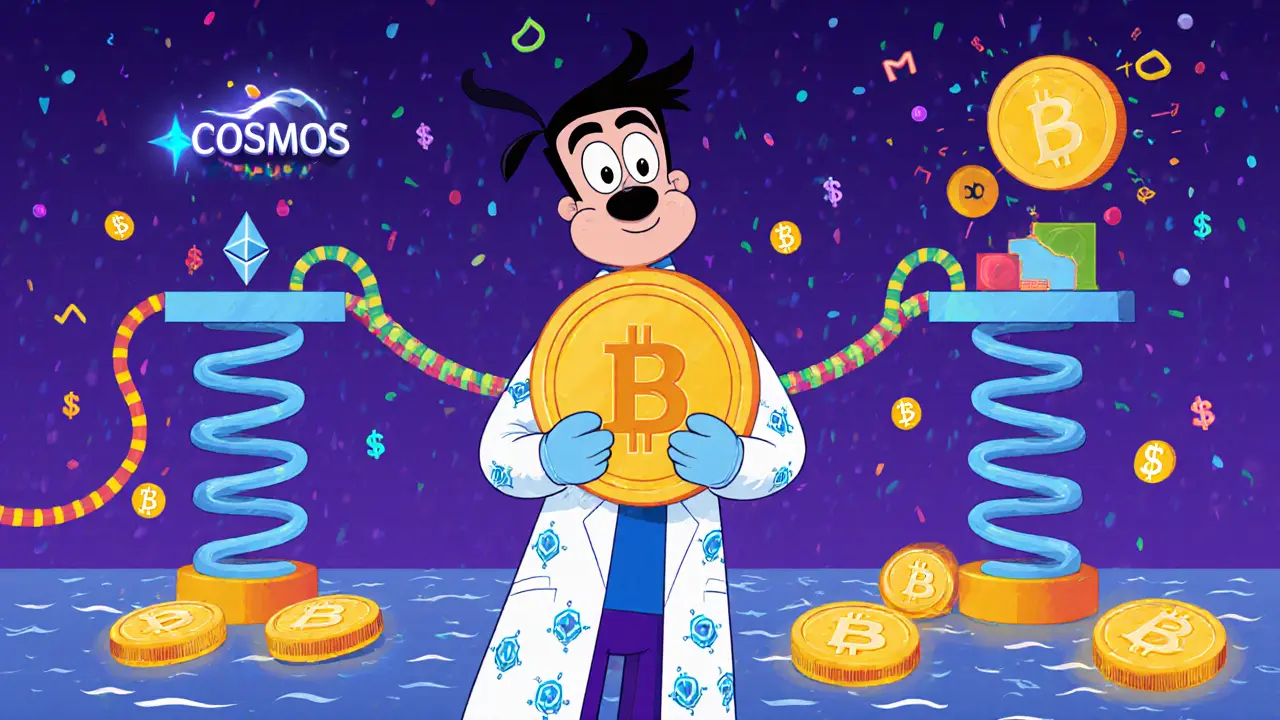
Liquid Staking Yield Calculator
Calculate Your Cross-Chain Yield
Your Results
Note: This calculation assumes you're borrowing the same amount as you're staking. In reality, you can borrow more than your staked value using collateralization ratios. UX Chain allows borrowing against staked assets while continuing to earn rewards.
How UX Chain Works
UX Chain lets you stake your assets on your native chain (like ATOM on Cosmos) while using them as collateral on other chains (like Ethereum). You earn staking rewards from your native chain while borrowing against your assets.
Example: If you stake 100 ATOM at 7% APY and borrow 50 USDC at 5% interest, you can pay the borrowing interest with your staking rewards.
UX Chain (UX) isn’t just another cryptocurrency. It’s a bridge. A bridge between blockchains that lets you use your staked assets as collateral - without giving up the rewards you earn from staking. If you’ve ever locked up your ATOM, ETH, or SOL to earn yield, only to find out you can’t use them in DeFi loans, UX Chain was built to fix that exact problem.
What UX Chain Actually Does
UX Chain, formerly known as Umee, is a blockchain built on the Cosmos SDK with a Tendermint Proof-of-Stake consensus. It doesn’t try to be everything. Instead, it focuses on one thing: unlocking capital that’s stuck in staking. Most DeFi protocols force you to unstake your assets before you can use them as collateral for loans. That means you lose out on staking rewards while you’re borrowing. UX Chain changes that. You can stake your ATOM on the Cosmos network, then use that same staked asset as collateral to borrow USDC on Ethereum - all while still earning staking rewards.
This is called liquid staking on a cross-chain level. It’s not just about moving tokens between chains. It’s about letting your assets work harder. If you’re earning 7% APY from staking ATOM and borrowing USDC at 5% interest, you could theoretically pay the interest with your staking rewards and end up with a 0% effective loan rate. That’s the kind of efficiency UX Chain was designed for.
The UX Token: More Than Just a Coin
The UX token (formerly UMEE) is the backbone of the network. It’s not just a speculative asset. It has real, functional roles:
- Network fees: You pay transaction fees in UX to interact with the chain.
- Security: Validators stake UX to secure the network - like other Proof-of-Stake chains.
- Governance: UX holders vote on protocol upgrades, fee structures, and new integrations.
- DeFi utility: It’s used in cross-chain lending, borrowing, and collateralization workflows.
Unlike many tokens that exist only for trading, UX is needed to make the system work. Without it, the cross-chain DeFi engine doesn’t run.
Tokenomics: Supply, Circulation, and Value
As of November 2025, UX Chain has a total supply of 12.3 billion UX tokens, with a maximum cap of 21 billion. The circulating supply is around 3.98 billion. That means over 60% of the total supply is still locked up or yet to be released - a common structure for protocols aiming for long-term sustainability.
The token hit an all-time high of $0.3595 in February 2022, right after launch. Since then, it’s seen heavy volatility. By April 2025, it dropped to a low of $0.0002416 - a sign of weak liquidity and low adoption. As of now, the price hovers around $0.0001589 USD. The market cap sits at roughly $635,750, and the 24-hour trading volume is under $300. That’s extremely low for a project with cross-chain ambitions.
Here’s the catch: UX trades almost exclusively on Osmosis DEX, paired with UOSMO. There are no listings on Binance, Coinbase, or even major decentralized exchanges like Uniswap or PancakeSwap. That severely limits accessibility and price discovery. If you want to buy UX, you need to use a Cosmos wallet like Keplr, connect to Osmosis, and swap from another token - which adds friction for new users.
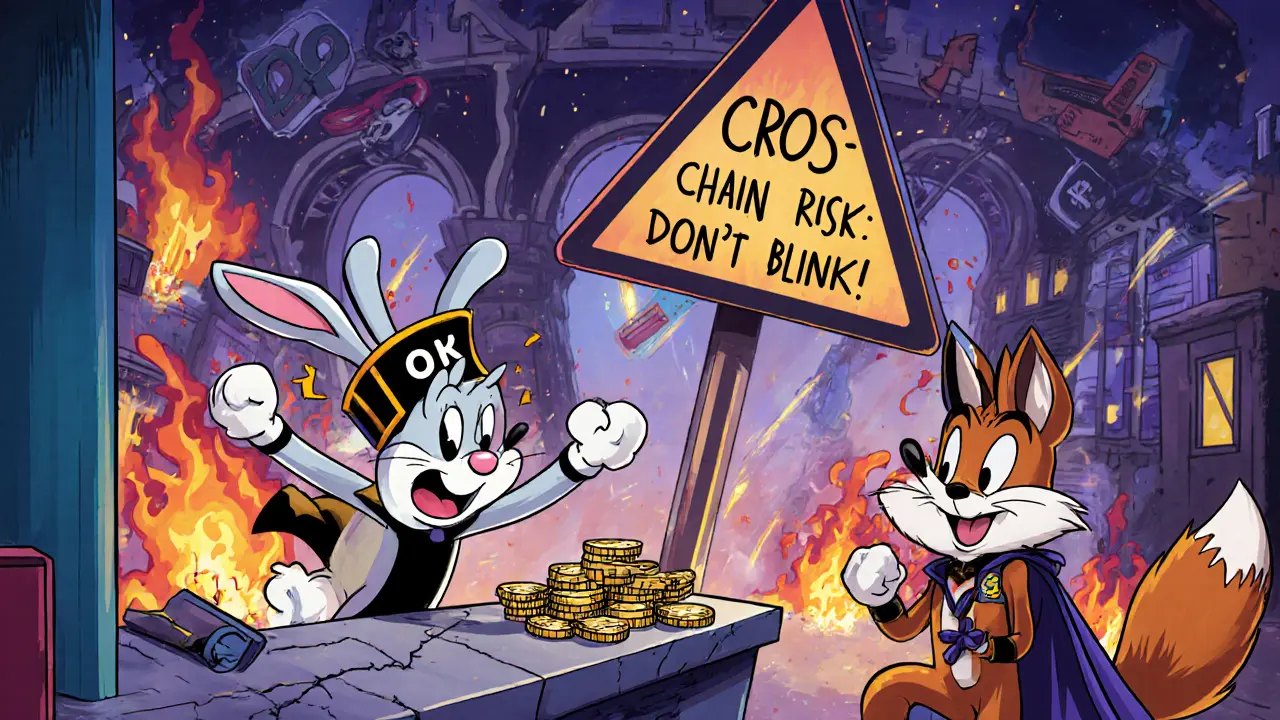
How UX Chain Compares to Other Cross-Chain Protocols
UX Chain isn’t the only player trying to solve cross-chain DeFi. But it’s one of the few focused specifically on staked assets.
| Protocol | Focus | Staked Asset Collateral? | Key Chains Supported | Trading Volume (24h) |
|---|---|---|---|---|
| UX Chain | Staked asset leverage | Yes | Cosmos, Ethereum, Osmosis, BSC, Polygon | $288 |
| THORChain | Native asset swaps | No | Cosmos, Bitcoin, Ethereum, BSC | $12M |
| Synapse Protocol | Token bridging | No | Ethereum, Polygon, Arbitrum, Avalanche | $45M |
| Chainlink CCIP | Secure message passing | No | Multi-chain (Ethereum, Solana, etc.) | N/A (infrastructure) |
THORChain and Synapse are bigger, with higher volumes and broader adoption. But they don’t let you use staked assets as collateral. UX Chain fills that gap. If you’re serious about maximizing yield across chains, it’s the only protocol that lets you do it without unstaking.
Who Uses UX Chain? And Who Should Avoid It?
UX Chain is for advanced DeFi users who understand staking, collateralization, and cross-chain bridges. It’s not for beginners. You need to know how to use Keplr or Leap wallets, manage multiple chains, and handle the risks of cross-chain smart contracts.
It’s also not for traders looking for quick gains. The trading volume is too low. Slippage is high. You could easily lose money just trying to buy or sell. This isn’t a coin to speculate on - it’s a tool to use if you’re already deep in Cosmos or Ethereum DeFi.
If you’re staking ATOM, OSMO, or ETH and want to borrow against it without losing yield, UX Chain is worth exploring. If you’re just looking to buy crypto hoping it’ll go up? Skip it. The market isn’t liquid enough to support that kind of play.
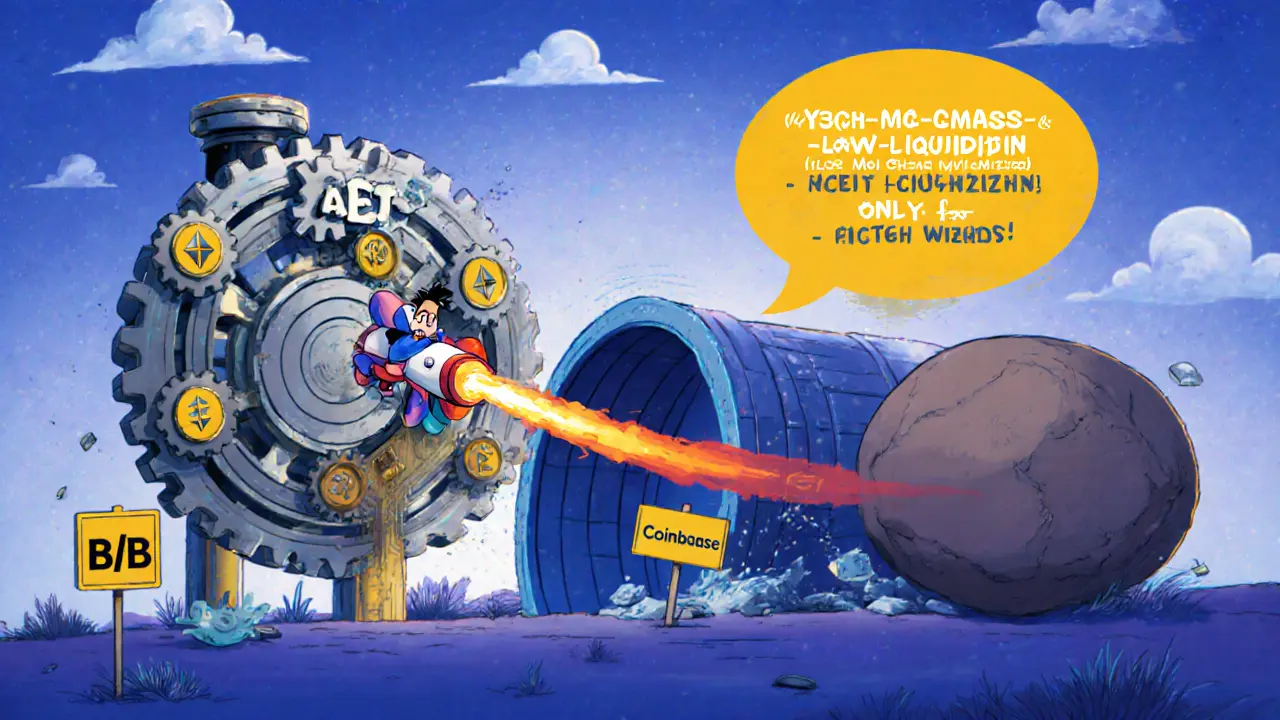
Future Roadmap and Risks
UX Chain’s roadmap included integrations with Solana, Arbitrum, and Optimism. As of late 2025, those are still in progress. The protocol has also teased new financial instruments like meTokens (tokenized staking positions) and Staking Curves (dynamic reward structures). These could be game-changers - if they’re built securely.
But the risks are real. Cross-chain protocols are complex. A bug in the bridge could mean lost funds. The low liquidity means price manipulation is possible. And with only one major DEX listing, there’s no backup if Osmosis has issues.
The rebrand from Umee to UX Chain suggests the team is trying to refresh the project’s image. But without a clear marketing push, user adoption remains minimal. The real test will be whether major DeFi apps like Aave or Compound integrate with UX Chain as collateral sources. So far, none have.
How to Get Started with UX Chain
If you’re ready to try it:
- Get a Cosmos wallet: Install Keplr or Leap Wallet in your browser.
- Buy OSMO or ATOM on a centralized exchange and send it to your wallet.
- Go to Osmosis DEX and swap for UX.
- Use the UX Chain app to stake your tokens or borrow against them.
There’s no mobile app. No simple UI. You’re working with raw DeFi tools. This isn’t a passive investment. It’s an active, technical workflow.
Final Thoughts
UX Chain is a smart idea with a weak market. The concept - using staked assets as collateral across chains - is powerful. It solves a real pain point in DeFi. But without liquidity, exchange listings, or integration with major protocols, it’s stuck in early adoption.
It’s not a coin you buy to get rich. It’s a tool you use if you’re already deep in staking and want to squeeze more value out of your assets. For now, it’s a niche project with high potential but very low accessibility. Watch its progress. If it lands integrations with Aave, Curve, or Ethereum L2s, it could explode. Until then, treat it like a beta test - not a bet.
Is UX Chain the same as Umee?
Yes, UX Chain is the rebranded version of Umee. The project changed its name from Umee (UMEE) to UX Chain (UX) to better reflect its role as a cross-chain DeFi hub. The token, blockchain, and core functionality remain the same - only the branding has changed.
Can I stake UX tokens?
Yes, you can stake UX tokens to help secure the network. Validators and delegators stake UX to earn rewards in the form of additional UX tokens. Staking also gives you voting power in protocol governance decisions.
Where can I buy UX coin?
As of 2025, UX is traded almost exclusively on Osmosis DEX using the UX/UOSMO trading pair. It is not listed on any major centralized exchanges like Binance or Coinbase. You’ll need a Cosmos wallet like Keplr and some OSMO or ATOM to swap for UX.
Is UX Chain safe to use?
UX Chain uses a well-tested Cosmos SDK and Tendermint consensus, which are secure. But cross-chain bridges are inherently risky. If the bridge between Cosmos and Ethereum has a flaw, your assets could be lost. Only use funds you’re willing to risk. Always audit contracts and start small.
What’s the difference between UX Chain and Chainlink CCIP?
Chainlink CCIP is a messaging protocol that lets blockchains send data to each other. UX Chain is a full DeFi protocol built on a blockchain that lets you stake, borrow, and lend across chains. CCIP is infrastructure; UX Chain is an application built on top of cross-chain tech. They’re not direct competitors - they serve different purposes.
Why is UX Chain’s trading volume so low?
UX Chain’s low volume comes from limited exchange listings (only Osmosis), lack of marketing, and high technical barriers. Most users don’t know how to use it, and few exchanges are willing to list a low-volume token. Without liquidity, price discovery is poor, which discourages more users from joining - a classic catch-22.


